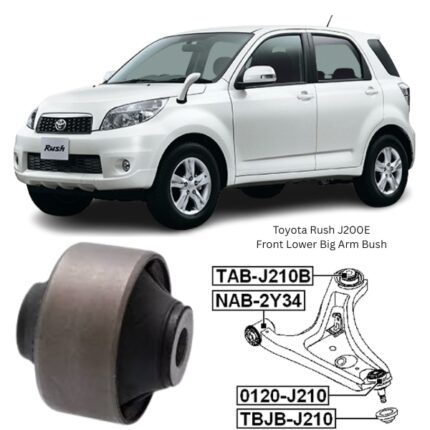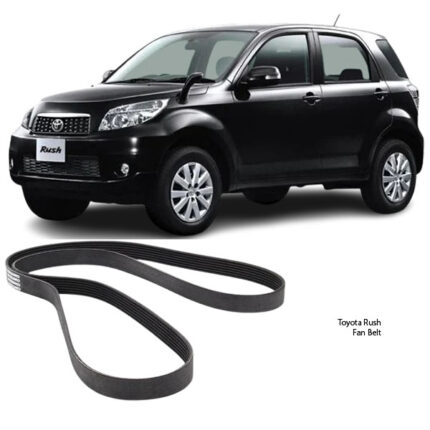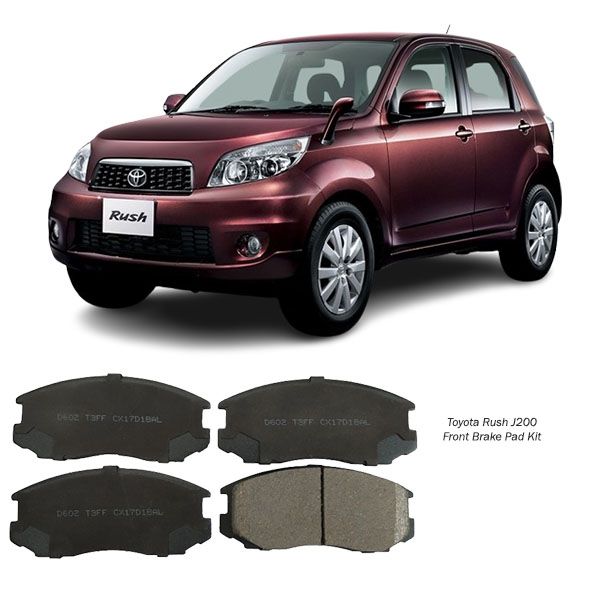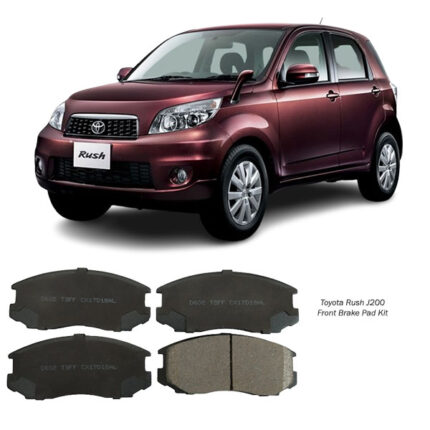Get Toyota Rush J200 Front Brake Pad Kit D6070 in Kenya
The rear shock absorber assembly is a fundamental part of a vehicle’s suspension system, playing a critical role in ride comfort, handling stability, and safety. Located at the back of the vehicle, the shock absorber assembly is responsible for controlling the movement of the rear suspension. It absorbs and dissipates the kinetic energy generated when the vehicle drives over uneven surfaces, bumps, or potholes, ensuring the tires remain in contact with the road at all times.
A standard rear shock absorber assembly consists of a piston, hydraulic fluid, a cylinder (also called a tube), seals, and mounting hardware. In many designs, it may also come with a coil spring in what’s known as a shock-and-spring assembly or a strut system, but in basic form, it’s a telescopic hydraulic unit.
Function and Working Principle
The rear shock absorber does not support the weight of the vehicle—that’s the job of the springs. Instead, it controls the movement of the springs and the suspension. When the rear wheels hit a bump or dip, the springs compress and expand. The shock absorber resists this motion by converting kinetic energy into heat through hydraulic fluid inside the tube.
The movement of the piston inside the shock absorber forces oil through small internal valves and orifices. These restrict the flow of the fluid, slowing down the movement of the piston and, as a result, the movement of the suspension. This resistance dampens vibrations and reduces the oscillation of the vehicle body.
Advantages of a Good Rear Shock Absorber Assembly
-
Improved Ride Comfort
A well-functioning rear shock absorber smooths out bumps and road imperfections, providing a more comfortable ride for passengers, especially in the rear of the vehicle. -
Enhanced Handling and Control
By limiting excessive suspension movement, good rear shocks ensure that the tires maintain optimal contact with the road, even during cornering or braking. This enhances steering response and vehicle stability. -
Better Braking Efficiency
During sudden stops, rear shock absorbers help minimize weight transfer from the rear to the front, preventing rear-end lift and ensuring that all four wheels contribute to braking performance. -
Tire Longevity
A functioning rear shock absorber prevents the rear tires from bouncing excessively. This ensures even tire wear and reduces the chances of premature tire damage due to cupping or scalloping. -
Protection of Suspension Components
With shocks absorbing much of the stress from road impacts, other rear suspension components—like springs, bushings, and control arms—experience less wear and tear. -
Minimized Body Roll and Sway
Especially during sharp turns or lane changes, good rear shocks prevent excessive leaning or body roll, keeping the vehicle composed and safe.
Disadvantages and Effects of a Worn or Faulty Rear Shock Absorber
-
Reduced Ride Comfort
A worn shock absorber fails to dampen road irregularities, resulting in a bouncy, unstable, or jarring ride—especially noticeable for rear-seat occupants. -
Poor Handling and Stability
When shocks are no longer functioning correctly, the rear end of the vehicle may sway excessively during turns or while driving over uneven terrain, compromising control. -
Increased Braking Distance
Bad rear shocks allow the rear of the vehicle to lift under hard braking. This reduces rear tire grip, increasing stopping distances and the risk of skidding. -
Uneven or Accelerated Tire Wear
A bad shock allows the tire to lose contact with the road and bounce uncontrollably, which creates uneven tread wear patterns and shortens the tire’s lifespan. -
Noise and Vibration
Faulty shock absorbers often cause knocking, clunking, or rattling sounds from the rear suspension. Vibrations may also be felt in the vehicle’s cabin or rear floor. -
Damage to Other Suspension Parts
A rear shock absorber in poor condition puts additional strain on related suspension components, including springs, trailing arms, and bushings, leading to more extensive and expensive repairs over time.
Signs of a Worn-Out Rear Shock Absorber Assembly
-
Bouncy Rear End
If the rear of the vehicle continues to bounce after hitting a bump or dip, it’s a strong indicator that the rear shocks are no longer absorbing energy efficiently. -
Excessive Body Sway or Roll
When the vehicle leans too much during cornering or sways from side to side on uneven surfaces, the rear shocks may be failing. -
Increased Stopping Distance
A noticeable delay or instability during braking, especially with the rear of the vehicle lifting, can be a sign of ineffective rear dampening. -
Tire Cupping or Scalloping
Irregular tire wear, such as patches that look wavy or scalloped around the tread, may be caused by uncontrolled tire movement due to weak shocks. -
Fluid Leakage
Hydraulic oil visible on the outside of the shock absorber is a clear sign of seal failure, which compromises the shock’s ability to function. -
Rear End Sag or Uneven Height
If one side of the rear suspension appears lower than the other, the shock absorber (or its associated spring) might be worn or damaged. -
Noise While Driving
Rattling, knocking, or clunking sounds from the rear when going over bumps or rough roads could indicate internal wear or broken mounts.
How to Replace a Rear Shock Absorber Assembly
Tools and Materials Needed:
-
Jack and jack stands (or a hydraulic lift)
-
Lug wrench
-
Socket set and ratchet
-
Wrenches
-
Torque wrench
-
Penetrating oil (if bolts are rusted)
-
New rear shock absorber assembly
Step-by-Step Process
-
Park and Secure the Vehicle
Ensure the vehicle is on a flat surface. Engage the parking brake and use wheel chocks for safety. -
Raise the Rear
Use a jack to lift the rear of the vehicle and place it securely on jack stands. -
Remove the Rear Wheels
Use a lug wrench to remove the wheels for easier access to the shock absorber assembly. -
Locate the Shock Absorber
Identify the top and bottom mounting bolts of the shock absorber. These usually connect to the frame and axle or control arm. -
Apply Penetrating Oil
Spray penetrating oil on the bolts if they are rusted or corroded. Allow it to soak for a few minutes. -
Unbolt the Shock
Use the appropriate socket or wrench to remove the lower and upper mounting bolts. Support the shock during removal to prevent sudden drops. -
Install the New Shock
Position the new rear shock absorber in place. Align the bolt holes and insert the top and bottom bolts. -
Torque to Specifications
Use a torque wrench to tighten all bolts to the manufacturer’s recommended torque. Do not overtighten or under-tighten. -
Reinstall Wheels and Lower the Vehicle
Put the wheels back on, tighten the lug nuts, lower the vehicle, and then torque the lug nuts in a crisscross pattern. -
Test Drive
After installation, take the vehicle for a short drive to ensure improved ride quality and absence of noise or imbalance.
Follow us on Facebook for more parts.





Reviews
Clear filtersThere are no reviews yet.